Wednesday, January 16, 2019
Denmark is well connected and accessible via a solid public transport network – from trains (connecting cities) to local buses within a city. Copenhagen, the capital, aims to be a zero-carbon city by 2025, so the presence of bikes is very evident.
Copenhagen is fairly relaxed and laidback. Pedestrians and bikers dot the city and most shops and establishments do not open before 10:00 AM. Getting to Copenhagen Central station is a 20-minute train ride from the Airport – the train station is within the airport itself!
The Castles:
No visit to Denmark is complete without a visit to its castles. From the Rosenborg Castle in Copenhagen to the Kronborg Castle in Helsingor, Denmark has enough castles to keep the historically inclined, interested. The Kronborg Castle is a big draw since it was the inspiration behind Shakespeare’s Hamlet and rightly so, is a part of UNESCO’s World Heritage sites. To get to the castle, you need to embark on a 50-minute north-bound train ride to Helsingor, from Copenhagen Central station. The Castle is visible as soon as you get out of Helsingor train station, and is just a walking distance away.

Kronborg Castle – main entrance

Kronborg Castle – view from outside

Kronborg Castle
There’s a fee to enter the castle, which includes a guided tour of the castle and during summer, you can witness “Hamlet." being enacted right before you. This was the highlight of our trip. And the visitors/onlookers are skillfully woven into the enactment – like a few of us being taken into the cellar to witness Hamlet see the apparition of his dead father.
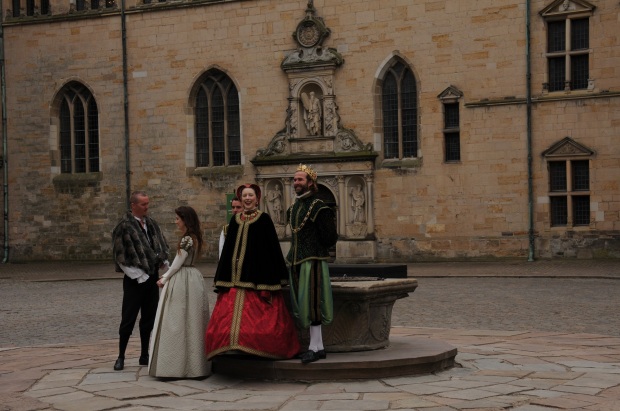
Hamlet performance at Kronborg Castle
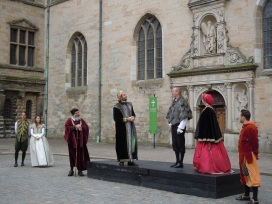
Kronborg Castle – Hamlet performance

Kronborg Ballroom – Hamlet performance
The interior of the castle is divided into a few sections – the apartments on the north-side first floor which house the King’s and Queen’s chambers, the ballroom, which is dotted by a series of large paintings and the chapel on the ground floor of the Southern side.
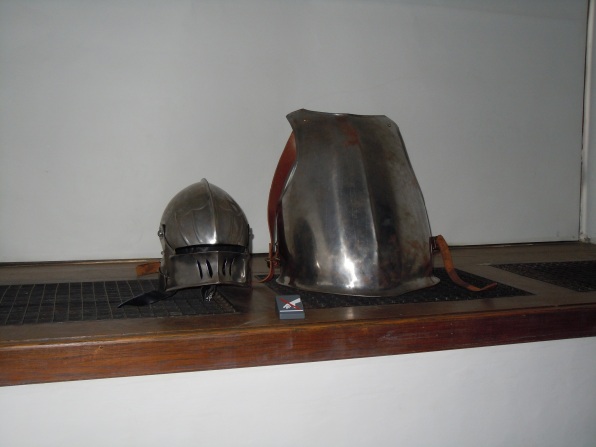
Armor on display – Kronborg Castle

Kronborg Castle – inner compound

Kronborg Castle – chapel interior
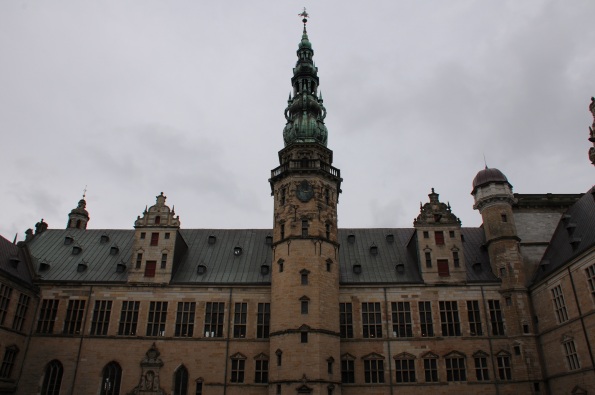
Kronborg Castle

Kronborg Castle – throne room
One must also spend some time outside the castle which has rows of cannons pointing at Sweden across the Baltic Sea, The view along the Baltic Sea provides a lot of photo opportunity. Once you step out of the main entrance to the castle, you must check out a few cafes in the neighborhood before bidding goodbye to the city.
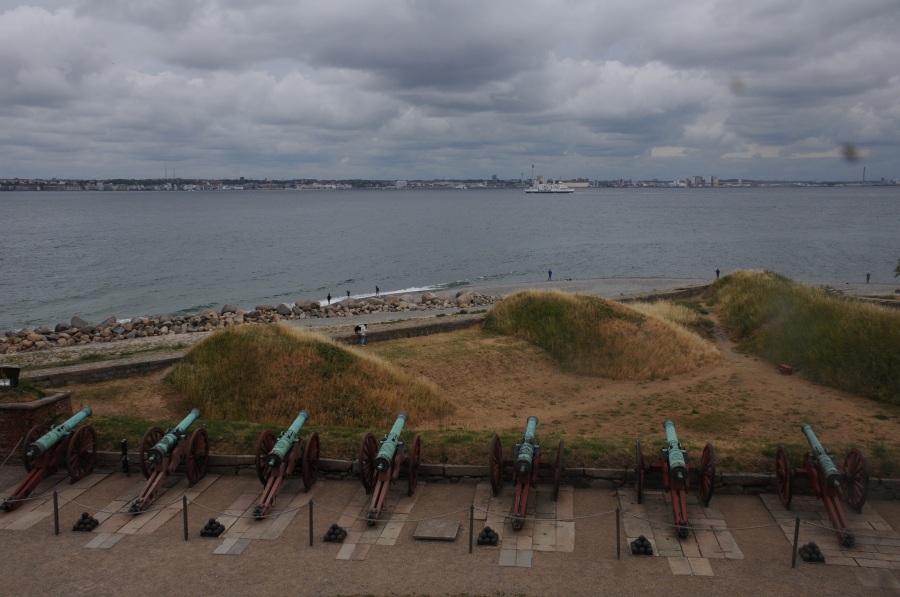
Back in Copenhagen, the Rosenborg Castle is one of the more visited castles around town. The big draws being the architecture, the collection of crown jewels and a well-designed adjacent garden.
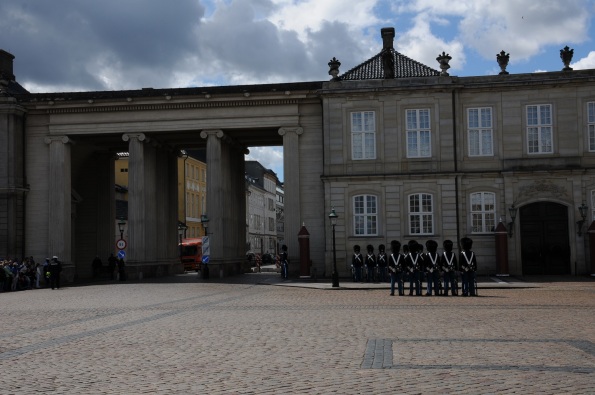
Amalienborg Palace – change of guard

Rosenborg Castle
Everyday, the Danish Royal Guard march from Rosenborg Castle to Amalienborg Palace where the Changing of the Guard ceremony takes place. The Guard leaves Rosenborg Castle at 11:30 AM to arrive at Amalienborg Palace for the ceremony at 12:00. So if you can co-ordinate the timing, you can witness the ceremony at the Amlienborg Palace at 12:00. Since 1794 Denmark’s reigning monarchs’ place of residence has been the Amalienborg’s palaces.
Copenhagen City:
Strøget is Copenhagen’s and one of Europe’s longest pedestrian streets. It’s lined with a wide variety of stores – both budget-friendly as well as high-end. You can easily spend a half day strolling and shopping through this street and there. Look up and down the side streets during your shopping spree, and you will see several of Copenhagen’s beautiful sights and attractions as well as street entertainers

The 17th century tower and observatory Rundetaarn, or the round tower, is the oldest functioning observatory in Europe. The observatory is still used by amateur astronomers and the many visitors. The observatory is encircled by an outdoor platform from which you have a magnificent view of the old part of Copenhagen.
One of the the top tourist attractions of Copenhagen is the statue of the Little Mermaid – a gift from Danish brewer Carl Jacobsen to the City of Copenhagen. The sculpture is made of bronze and granite and was inspired by Hans Christian Andersen’s fairy tale, the Little Mermaid. But it was the 1989 Disney movie, The Little Mermaid that brought this sculpture into the limelight. Visitors be warned that this sculpture is not very grand, so don’t pin your hopes too high when you go for your visit.
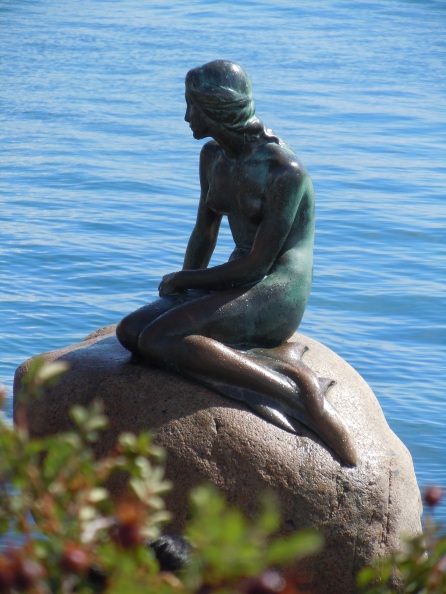
The Little Mermaid

Rundetaarn Tower
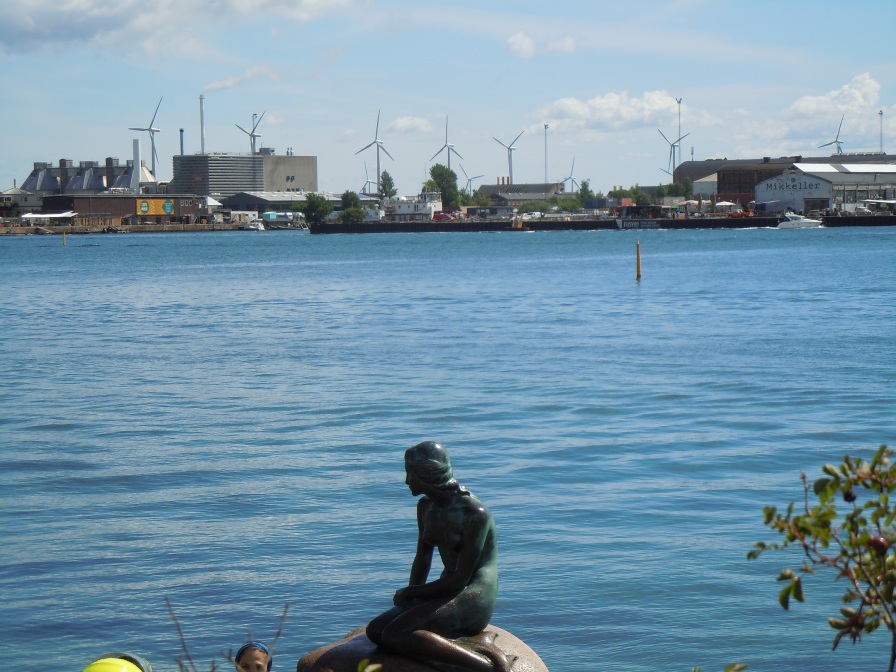
The Little Mermaid
As you look up behind the Little Mermaid statue, you see the unlikely location for a new year-round ski track – the sloping roof of a state-of-the-art green power plant. When planning to build the Amager Bakke waste-to-power incinerator plant, as part of an aim to become the world’s first zero-carbon city by 2025, the Danes decided to move away from the usual monolithic, industrial look. Instead, they sought to make the publicly owned facility an attraction in its own right – clad in shiny aluminium, surrounded by parkland, and with one of the world’s longest artificial ski slopes on its roof. It doesn’t snow in Denmark, so the country hopes to use this artificial ski facility to help bring in a few Winter Olympic medals.

Nyhavn

Gefion Fountain
Nyhavn is literally and figuratively, the most colorful spot in Copenhagen. Originally, Nyhavn was a busy commercial port where ships from all over the world would dock. The area was packed with sailors, ladies, pubs and alehouses. Today the beautiful old houses and restaurants have been splashed with an amazing array of colors and Nyhavn is filled with people enjoying the relaxed atmosphere by the canal, jazz music and great food. And while you’re at Nyhavn, make sure to check out building no. 20 – where Danish fairytale writer, Hans Christian Andersen, used to live while he wrote the ‘The Tinderbox’, ‘Little Claus and Big Claus’, and ‘The Princess and the Pea’.
While you’re out and about you may come across the Gefion Fountain – a large fountain near the harbor front. It features a group of animal figures being driven by the legendary Norse goddess, Gefjun. It is the largest monument in Copenhagen and used as a wishing well. According to an ancient legend, Gefion was the goddess who ploughed the island of Zealand out of Sweden after transforming her four sons into immensely powerful oxen. They ploughed deeply in the ground and raised the land and pulled it into the sea. This is how the island of Zealand was created, according to legend.
Tivoli Gardens are a huge draw in Copenhagen. Check with your Hotel for discounted tickets to the gardens before you set out. Tivoli Gardens was opened in 1843 and is the second oldest operating amusement park. It boasts beautiful gardens, exhilarating rides, and phenomenal entertainment venues which served as Walt Disney’s inspiration for Disneyland after his visit to Tivoli Gardens in 1951.

Nimb Fountain – Tivoli Gardens

Chinese Tower – Tivoli Gardens

Tivoli Gardens
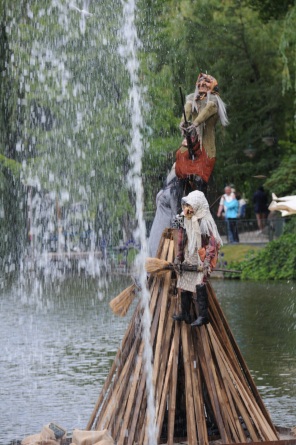
Pirates – Boat Lake – Tivoli Gardens
As you enter the park from the main entrance, you’ll come across the oldest building in the Park – the Peacock theater. This is used for the park’s regular ballet performances. Walking further down is the Nimb Fountain area with fountains, beautiful flowers and an occasional visit from a peacock and her chicks. It overlooks an arabesque castle – the Moorish Palace. From the 100 years+ old roller coaster to Boating Lake, there is plenty to do and enjoy, for everyone. You can easily spend an entire day at the park and a host of restaurant and food courts within the premises ensure you don’t need to leave to feed yourself.
Copenhagen is the home of Noma – the #1 restaurant in the world. But there are several places around town that you could try to enjoy a nice meal. Torvehallerne a food supermarket in Copenhagen is one such place. With over 60 stands selling everything from fresh fish, gourmet chocolate and spices, to prepared food stalls, this is a culinary delight for the traveler. Ideal place for breakfast and lunch and it is in the center part of town.

Torvehallerne – food stall

Torvehallerne – fresh produce stalls